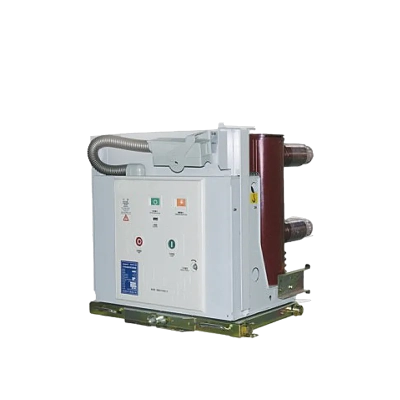Beyond SF6: The Search for Sustainable Insulation Technologies

The global electrical industry faces a critical challenge in finding viable alternatives to Sulfur Hexafluoride (SF6), a potent greenhouse gas traditionally used for electrical insulation and arc quenching. With SF6 having a global warming potential 23,500 times greater than CO2 and an atmospheric lifetime of 3,200 years, the transition to environmentally friendly alternatives has become an urgent priority. This comprehensive analysis explores the leading SF6 alternative technologies that are reshaping the future of electrical power equipment.
The Environmental Imperative
Regulatory Drivers
-
European Union F-Gas Regulation phase-down schedule
-
California's SB 1383 short-lived climate pollutant reduction strategy
-
International climate agreements and carbon pricing mechanisms
-
Corporate sustainability commitments and ESG reporting requirements
Environmental Impact Assessment
-
SF6's extreme global warming potential and long atmospheric lifetime
-
Challenges in containment and potential for fugitive emissions
-
End-of-life management and disposal complications
-
Total environmental footprint considerations
Leading Alternative Technologies
Vacuum Interruption Technology
-
Proven reliability in circuit breaking applications
-
Zero global warming potential and no gas handling requirements
-
Compact design and minimal maintenance needs
-
Excellent performance for medium-voltage applications
Fluorinated Gas Alternatives
-
Fluoronitrile-Based Mixtures: GWP < 1 with excellent dielectric properties
-
Fluoroketone Formulations: Ultra-low GWP and non-flammable characteristics
-
Gas Mixtures: Optimized blends with CO2, O2, or N2 as carrier gases
-
Performance Characteristics: Comparable dielectric strength with reduced environmental impact
Natural Origin Gases
-
Dry Air: Zero GWP, non-toxic, and readily available
-
Nitrogen: Inert properties and excellent dielectric capabilities
-
CO2-Based Mixtures: Moderate GWP with good thermal properties
-
Technical Considerations: Pressure requirements and system design implications
Solid Insulation Systems
-
Epoxy Resin Casting: Complete elimination of gas insulation
-
Advanced Polymer Composites: Enhanced dielectric and thermal properties
-
Hybrid Designs: Combination of solid and gas insulation technologies
-
Application Flexibility: Suitable for various voltage levels and configurations
Technical Performance Comparison
Dielectric Properties
-
Breakdown strength comparison across different technologies
-
Pressure and temperature dependence characteristics
-
Arc quenching capabilities and performance under fault conditions
-
Long-term insulation stability and aging characteristics
Operational Performance
-
Switching capability and contact life expectancy
-
Maintenance requirements and service intervals
-
Temperature operating ranges and environmental adaptability
-
Safety features and personnel protection considerations
Implementation Considerations
Equipment Design Modifications
-
Pressure vessel requirements for gas alternatives
-
Contact design optimization for vacuum interrupters
-
Insulation coordination and clearance adjustments
-
Monitoring and control system adaptations
System Integration
-
Compatibility with existing infrastructure
-
Protection coordination and relay settings
-
Control interface and communication protocols
-
Space requirements and footprint considerations
Case Studies: Successful Implementations
European Utility Transition
-
5-year SF6 phase-out program completion
-
Mixed technology approach using vacuum and alternative gases
-
99.9% reduction in greenhouse gas emissions from switchgear
-
Maintained reliability while achieving sustainability goals
Industrial Facility Retrofit
-
Complete replacement of SF6 equipment with vacuum technology
-
30% reduction in maintenance costs
-
Enhanced safety performance and simplified operations
-
Compliance with corporate sustainability targets
Future Development Pathways
Technology Innovation
-
Advanced vacuum interrupter designs for higher voltage applications
-
Improved alternative gas formulations with enhanced performance
-
Solid insulation materials with superior dielectric properties
-
Hybrid systems combining multiple technologies
Standardization and Certification
-
International standards development for alternative technologies
-
Testing protocols and performance validation procedures
-
Safety certification and environmental compliance verification
-
Industry-wide adoption and best practice establishment
Conclusion
The transition away from SF6 represents both a significant challenge and opportunity for the electrical industry. With multiple viable alternatives now available, utilities and industrial users can select technologies that match their specific requirements while achieving substantial environmental benefits.
Companies like Degatech Electric are leading this transition through their development of SF6-free switchgear solutions that incorporate the latest alternative technologies, providing customers with environmentally responsible options without compromising performance or reliability.
- Art
- Causes
- Crafts
- Dance
- Drinks
- Film
- Fitness
- Food
- Spiele
- Gardening
- Health
- Startseite
- Literature
- Music
- Networking
- Andere
- Party
- Religion
- Shopping
- Sports
- Theater
- Wellness



